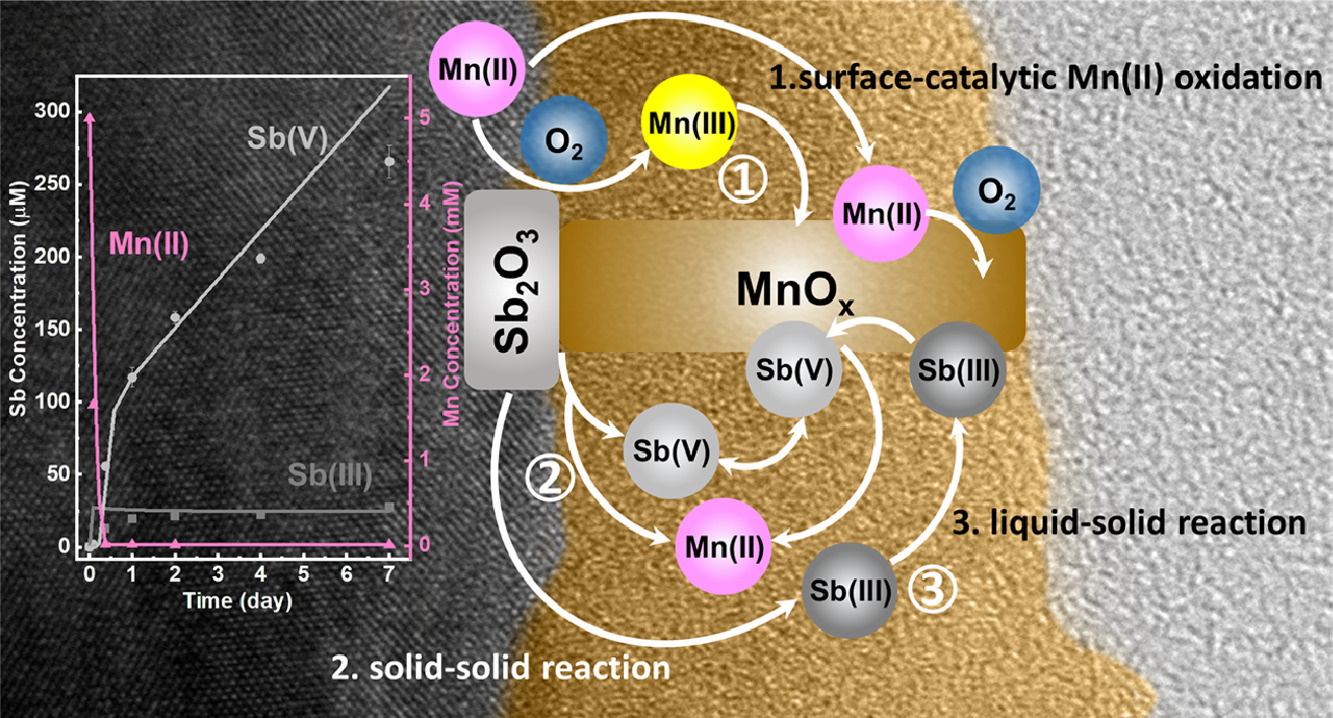Oxidative dissolution of Sb2O3 mediated by surface Mn redox cycling in oxic aquatic systems
Fig. Graphical abstract
Antimony trioxide (Sb2O3) is one of the primary forms of Sb in the environment, and its dissolution significantly impacts the migration and bioavailability of Sb. However, the dissolution of Sb2O3 coupled with abiotic redox of Mn processes is unclear. Here, we investigated the kinetics of Sb2O3 dissolution in the presence of the ubiquitous Mn(II) by kinetic experiments, spectroscopies, density functional theory calculations and the chemical kinetic modeling. The oxidative dissolution of Sb2O3 was catalyzed by Mn(II) through the in-situ generated amorphous Mn oxides (MnOx) under oxic conditions, during which the generation of Mn(III) is a critical step in Sb(V) release. The released Sb(V) was partially retained on MnOx through bidentate-binuclear (corner-sharing) complexes as revealed by extended X-ray absorption fine structure analysis. The coexistent morphological forms of Sb2O3, i.e., senarmontite and valentinite exhibited distinct dissolution patterns. Valentinite showed higher activity in catalyzing Mn(II) oxidation and faster oxidative dissolution than senarmontite, due to its higher surface energy and lower conduction band minimum of its exposed facets. These abiotic processes can extrapolate to other metal(loid)s (hydr)oxides, further supplying for the comprehensive understanding of the redox transformation of Mn.
Source: Water Research

